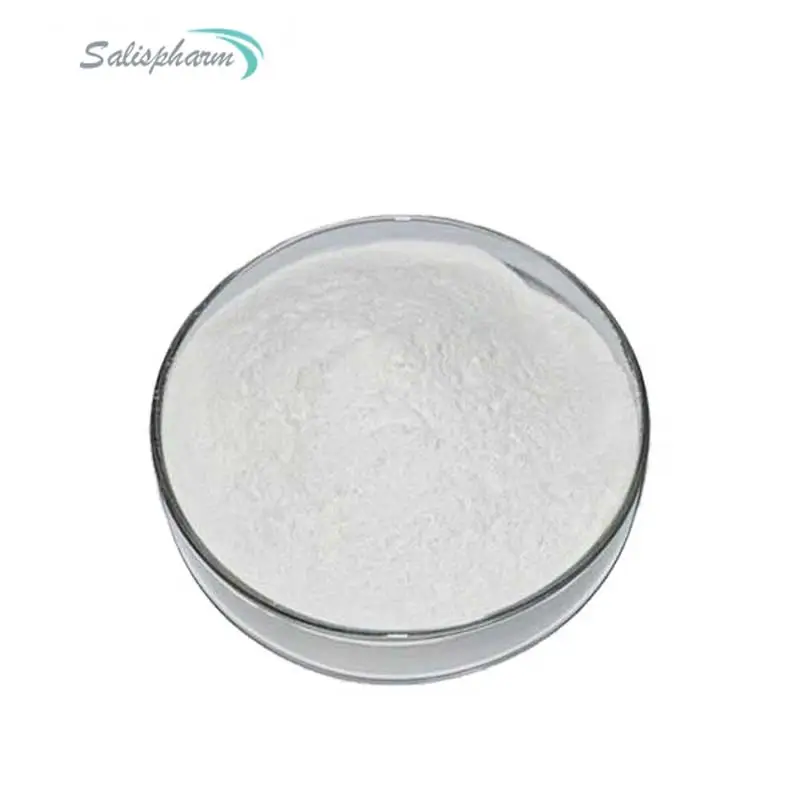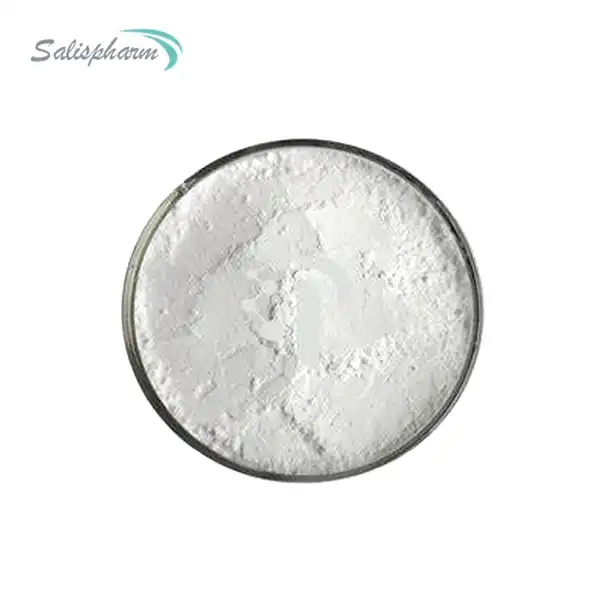Metronidazole powder, a synthetic antibiotic and antiprotozoal agent, has garnered significant attention in the medical and pharmaceutical industries due to its remarkable versatility in treating various infections. Derived from the nitroimidazole class of compounds, this potent medication has proven its efficacy against a broad spectrum of anaerobic bacteria and protozoan parasites. In this comprehensive blog post, we delve into the diverse applications of metronidazole powder, addressing three key questions that frequently arise.
What conditions can metronidazole powder treat?
Metronidazole powder has established itself as a frontline treatment for a wide range of conditions, primarily targeting anaerobic bacterial and parasitic infections. One of its most well-known applications is in the management of trichomoniasis, a sexually transmitted disease caused by the protozoan parasite Trichomonas vaginalis. Metronidazole powder is highly effective in eradicating this infection, offering a reliable cure for both men and women.
Additionally, metronidazole powder is commonly prescribed for the treatment of various anaerobic bacterial infections, including:
- Intra-abdominal infections: Metronidazole powder is often used in combination with other antibiotics to combat infections originating from the gastrointestinal tract, such as peritonitis, abscesses, and appendicitis. It is particularly useful in these cases due to its ability to penetrate deeply into the tissues and reach the site of infection effectively.
- Skin and soft tissue infections: This medication is effective against anaerobic bacterial infections affecting the skin, muscles, and connective tissues, such as diabetic foot ulcers, necrotizing fasciitis (flesh-eating disease), and cellulitis. Its broad-spectrum activity against anaerobic bacteria makes it a valuable tool in managing these potentially serious infections.
- Gynecological infections: Metronidazole powder plays a vital role in treating anaerobic bacterial infections of the female reproductive system, including bacterial vaginosis, endometritis, and pelvic inflammatory disease. Its ability to reach and eliminate anaerobic bacteria in these delicate areas contributes to its widespread use in gynecological practice.
- Oral and dental infections: It is prescribed for the management of anaerobic bacterial infections in the oral cavity, such as periodontitis, gingivitis, and dental abscesses. Metronidazole powder can be formulated into various dosage forms, including gels and mouthwashes, for targeted application in dental and oral infections.
Beyond its antimicrobial properties, metronidazole powder has demonstrated efficacy in the treatment of certain protozoal infections, such as amebiasis (caused by Entamoeba histolytica) and giardiasis (caused by Giardia lamblia). Its antiprotozoal activity makes it an invaluable tool in combating these debilitating gastrointestinal conditions, which can be particularly prevalent in developing countries with limited access to clean water and sanitation.
Moreover, metronidazole powder has shown promise in the treatment of other protozoal infections, such as balantidiasis (caused by Balantidium coli) and blastocystosis (caused by Blastocystis hominis). While these infections are less common, metronidazole powder remains an important therapeutic option, especially in cases where alternative treatments are ineffective or unavailable.
How does metronidazole powder work against bacterial and parasitic infections?
Metronidazole powder exerts its antimicrobial activity through a unique mechanism of action. It is a prodrug, meaning it requires metabolic activation within the target cells to become an active compound. Once inside anaerobic bacteria or protozoan parasites, metronidazole undergoes reduction by specific enzymes, forming reactive intermediates.
These reactive intermediates interact with the DNA of the target organisms, disrupting their genetic material and inhibiting essential cellular processes. This interference ultimately leads to the death of the anaerobic bacteria or protozoan parasites, effectively eliminating the infection.
Metronidazole powder's selective activity against anaerobic organisms is attributed to its ability to become activated only in the absence of oxygen. Aerobic bacteria and human cells, which have access to oxygen, are generally unaffected by metronidazole, minimizing potential harm to the host.
Interestingly, the exact mechanism by which metronidazole exerts its antiprotozoal activity is not fully understood. While its effects on DNA are well-established, researchers have proposed additional mechanisms that may contribute to its efficacy against protozoan parasites. These include inhibition of essential enzymes, disruption of membrane integrity, and interference with energy production pathways within the parasites.
Furthermore, metronidazole powder's unique ability to cross the blood-brain barrier makes it an invaluable option for treating anaerobic infections in the central nervous system, such as brain abscesses. Its penetration into the cerebrospinal fluid (CSF) allows it to reach and eliminate the causative pathogens in these delicate and hard-to-reach areas.
What are the potential side effects and contraindications of metronidazole powder?
While metronidazole powder is generally well-tolerated, it is essential to be aware of potential side effects and contraindications associated with its use. Common side effects may include:
- Gastrointestinal disturbances: Nausea, vomiting, abdominal cramps, and diarrhea are among the most frequently reported side effects. These symptoms are typically mild and can be managed with proper hydration and over-the-counter medications.
- Metallic taste: Some patients may experience a temporary metallic or bitter taste during treatment. This side effect is usually transient and resolves after completing the course of metronidazole.
- Headache and dizziness: These neurological side effects may occur, although they are typically mild and transient. In rare cases, more severe neurological symptoms, such as seizures or peripheral neuropathy, have been reported.
- Disulfiram-like reaction: Consuming alcohol while taking metronidazole can lead to a disulfiram-like reaction, characterized by flushing, nausea, vomiting, and palpitations. This reaction is caused by the inhibition of acetaldehyde dehydrogenase, an enzyme involved in alcohol metabolism.
Metronidazole powder is contraindicated in certain situations, including:
- Pregnancy and breastfeeding: Due to potential risks to the developing fetus and newborn, metronidazole should be used with caution during pregnancy and lactation, and only if the potential benefits outweigh the risks. Close monitoring by a healthcare professional is essential in these situations.
- Blood disorders: Individuals with severe blood disorders, such as leukopenia or thrombocytopenia, may require close monitoring during treatment, as metronidazole can exacerbate these conditions.
- Neurological disorders: Metronidazole should be used with caution in patients with active or chronic neurological disorders, as it may exacerbate symptoms or potentially cause neurological side effects.
- Liver disease: Patients with severe liver disease may require dose adjustments or alternative treatments, as metronidazole is primarily metabolized by the liver.
It is crucial to consult with a healthcare professional before starting metronidazole powder treatment and to follow the prescribed dosage and duration carefully. Adherence to medical advice and reporting any adverse effects promptly can help minimize the risk of complications. Additionally, patients should be informed about potential interactions with other medications, as metronidazole can interact with certain drugs, such as anticoagulants, lithium, and cyclosporine.
Conclusion
Metronidazole powder has proven to be an invaluable therapeutic agent in the fight against anaerobic bacterial and protozoal infections. Its versatility in treating a wide range of conditions, from sexually transmitted diseases to gastrointestinal infections, has solidified its position as a crucial component of modern medical practice. Its unique mechanism of action, selective targeting of anaerobic organisms, and ability to penetrate deep into tissues and the central nervous system make it an indispensable tool in the healthcare arsenal.
However, it is essential to exercise caution and follow professional medical guidance to ensure safe and effective use. By understanding its mechanisms of action, potential side effects, and contraindications, healthcare professionals can optimize the therapeutic benefits of metronidazole powder while minimizing risks to patients. Ongoing research and development efforts continue to explore novel formulations, delivery methods, and combinations with other agents to further enhance the efficacy and safety of this remarkable drug.
As the medical community's knowledge and understanding of anaerobic infections and protozoal diseases grow, metronidazole powder will likely remain a cornerstone of treatment, serving as a testament to the ingenuity of modern pharmaceutical science and its ability to address complex and challenging health issues.
If you are also interested in this product and want to know more product details, or want to know about other related products, please feel free to contact iceyqiang@aliyun.com.
References:
1. Lofmark, S., Edlund, C., & Nordlund, P. (2010). Metronidazole: a pillar of anti-infective chemotherapy. Medicinal Chemistry Communications, 1(6), 354-373.
2. Tally, F. P., Goldin, B. R., Sullivan, N., & Johnston, J. (1978). Metronidazole in the treatment of anaerobic infections. Antimicrobial Agents and Chemotherapy, 13(4), 588-593.
3. Lyu, J., Zeng, X., & Li, Y. (2022). Metronidazole: A Review of Its History, Synthesis, and Biological Applications. Molecules, 27(3), 801.
4. Müller, M. (1983). Mode of action of metronidazole on anaerobic bacteria and protozoa. Surgery, 93(1), 165-171.
5. Sisson, G., Jeeva, I., Aruna, R., & Shewade, D. G. (2011). Metronidazole. Profiles of Drug Substances, Excipients and Related Methodology, 36, 413-458.
6. Petrin, D., Delgaty, K., Bhatt, R., & Garber, G. (1998). Clinical and microbiological aspects of Trichomonas vaginalis. Clinical Microbiology Reviews, 11(2), 300-317.
7. Löfmark, S., Edlund, C., & Nordlund, P. (2010). Metronidazole: a pillar of anti-infective chemotherapy. Medicinal Chemistry Communications, 1(6), 354-373.
8. Müller, M. (1986). Reductive activation of nitroimidazoles in anaerobic microorganisms. Biochemical Pharmacology, 35(1), 37-41.
9. Osborne, R., Bentley, R., & Ralph, E. D. (2011). Metronidazole: an anaerobic weekend leave pass. BMJ Case Reports, 2011, bcr0820114622.
10. Brogden, R. N., & Heel, R. C. (1986). Metronidazole: a review of its antibacterial and antiprotozoal properties. Drugs, 31(2), 96-130.









